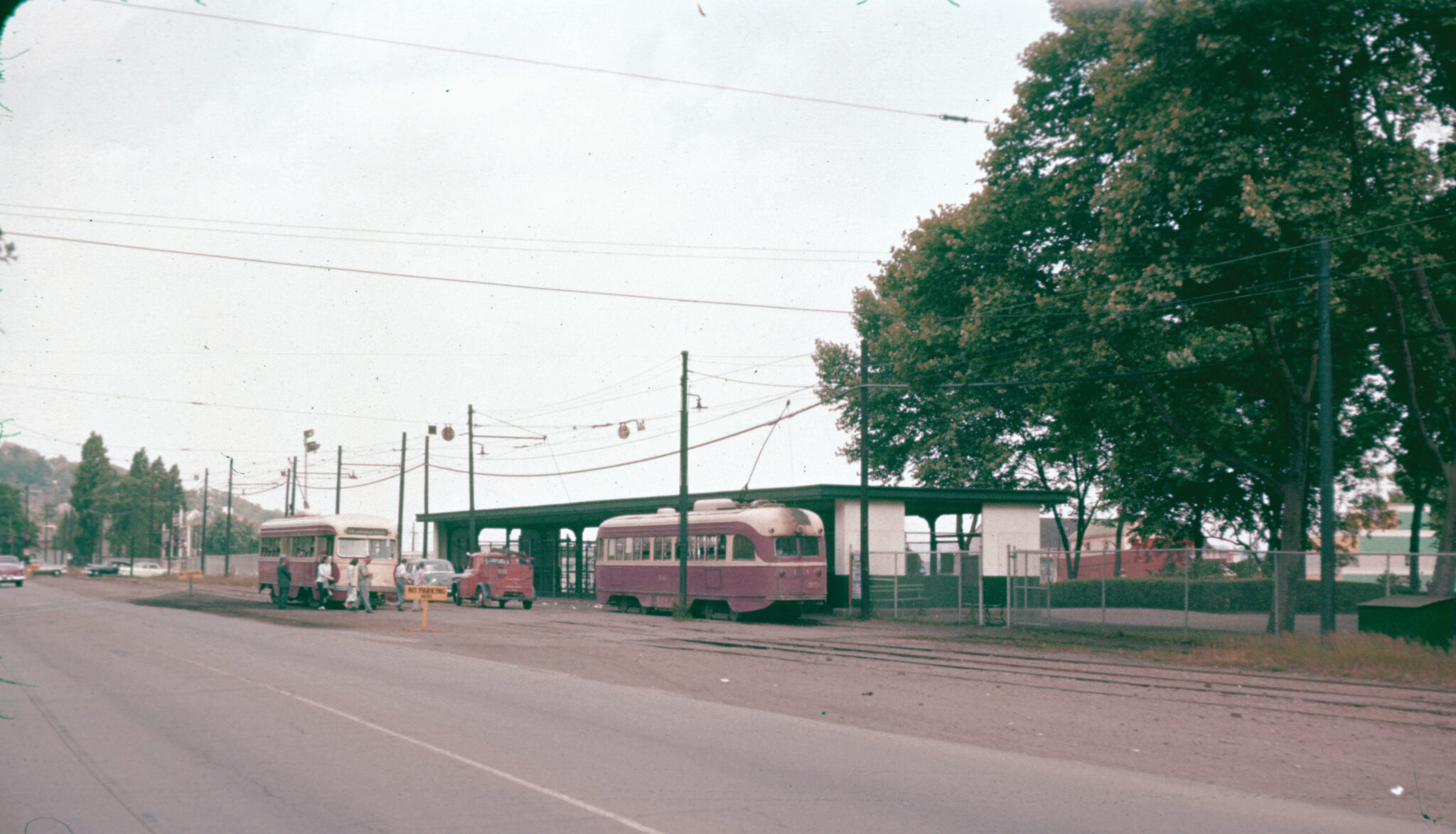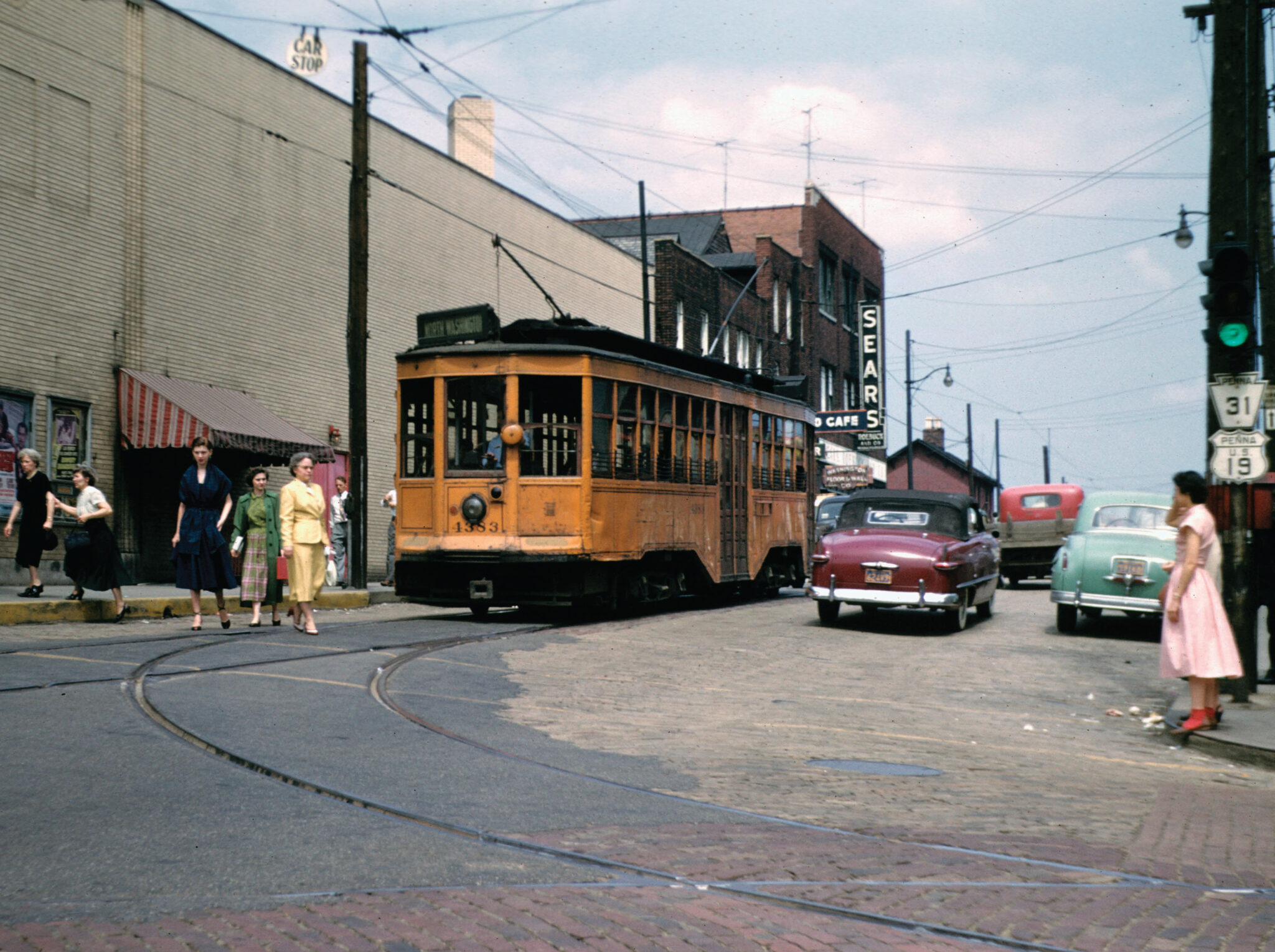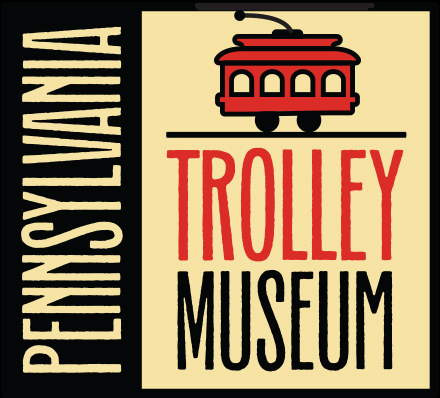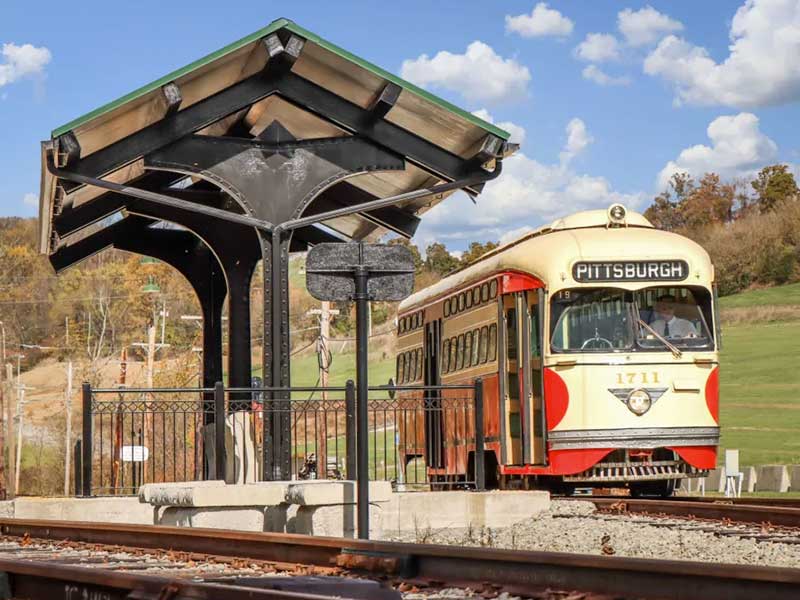This article was previously posted on the Washington County Tourism website.
At a time when people walked or rode horse-drawn carriages to get to their destinations, streetcars meant increased speed and comfort, as well as decreased travel time. It meant that people could live further from their workplace and travel to entertainment sites. People rode to all sorts of recreational activities. Trolley companies even constructed amusement parks along or at the ends of trolley lines. One of the first trolley parks in Pennsylvania was Kennywood constructed in 1899 by the Monongahela Street Railway Company. There are only eleven trolley parks still in operation in the United States and four of those are in Pennsylvania: Lakemont Park in Altoona, Dorney Park in Allentown, Kennywood in West Mifflin, and Waldameer Park in Erie.

Trolley station at Kennywood Park, 1958. After six decades, the trolleys were making their last runs to Kennywood in the summer of 1958. Eagle-eyed park enthusiasts can find “Noah’s Ark” in this view. Photo by James P. Shuman.

While trolley companies did not rely on big events to keep people from staying home on the weekends, they often saw increased ridership and a demand for increased frequency of trips during large events. For example, in 1903 the Pittsburgh Pirates played in the first ever World Series, hosting four games at Expansion Park III against the Boston Americans. Even though the Pirates lost the series in the final game in Boston, of the thousands that gathered to watch the game most of them arrived by trolley car. The same could be said for events around the country, including county fairs.
Chestnut Street at Main Street, Washington, 1952. Photo by Robert V. Mehlenbeck.
The Washington County Agricultural Fair has a storied history that began well before streetcars came along. However, it was in the streetcar era that the fair really began to see success. They found their permanent home, saw increased participation, and increased attendance. From the beginning of the trolley era, riding the streetcar to the Fair has been a big part of the experience. Pittsburgh Railways Company (PRC) ran service to Arden, a simple two minute walk from the Fair. Trolley service to the Fair ran from 1911 when the Fair moved to its current location until the interurban service from Pittsburgh to Washington ended in August of 1953. By then, the trolley era had been in a steep decline. As soon as February of the following year, the founders of the Pennsylvania Trolley Museum had purchased a portion of the abandoned PRC track. Both the Museum and the Fair have grown and changed over time, but the tradition of riding the trolley to the Fair has somehow managed to survive.

Fair-Goers at the Trolley Platform at the Entrance to the Washington County Fairgrounds, 2022. Photo by Kristen Fredriksen.
This year as you make plans to head out to the Fair so you can ride that one ride, or gather friends to try to tackle a brick of fries, or visit the animals and exhibits, or even catch the shows or demolition derbies, save yourself a parking headache and park at 2800 Main St. (Eaton’s parking lot) or 1 Museum Rd. (the Museum’s parking lot) and take part in a 112 year old tradition. Riding the trolley to the fair is only $5 per person. You can also upgrade that to admission to the Museum and get a guided tour.
New this year, the Museum is offering weekly passes for the frequent rider. Passes will cost $25 and include all 8 days, you must bring your pass each day.


